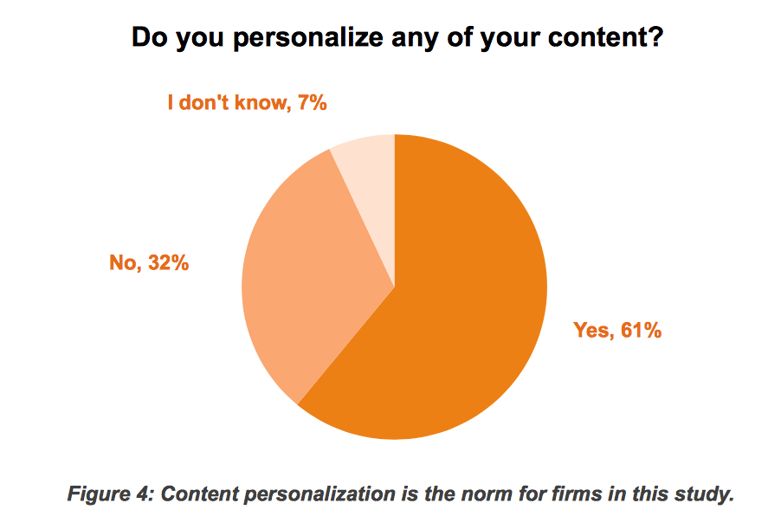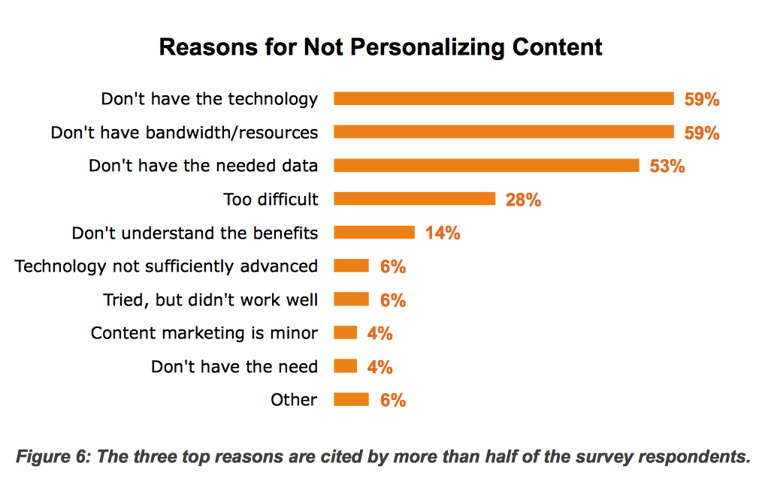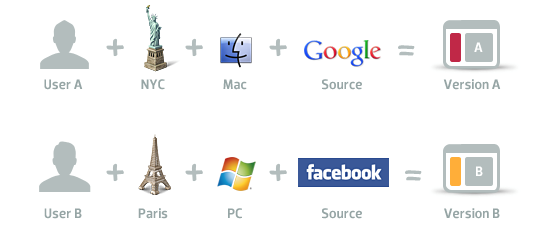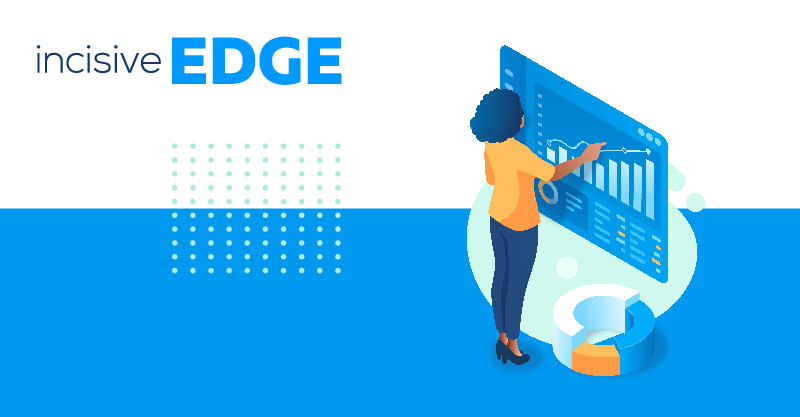Long gone are the days when traditional means of advertising could satisfy consumers’ demands for product information – today, people want much more, and content marketing is how we must go about it.
Beyond being informed, everyday consumers and B2B buyers alike want to be engaged and even entertained as they embark upon the buyer’s journey from discovery through to purchase.
But what’s engaging and entertaining for one buyer may not be so for another – and this means that brands need to find ways and means to deliver personalised content marketing materials to specific users if they are to differentiate themselves in an increasingly competitive marketplace.
Check out the following blog to learn more about content marketing:
- How to Develop a Content Marketing Strategy that Wins
- 3 Powerful Metrics to Track to Improve Content Marketing
- How To Adopt a Great Editorial Content Marketing Mindset
- How to tell if you need a more aggressive Content Strategy?
What Is Personalisation Marketing?
Content marketing personalisation is nothing new. Think about all those emails from various brands and publications that you’ve subscribed to that arrive in your inbox every day. We’d wager that very few – if any at all – begin the message with “Dear Sir/Madam”, or “To Whom It May Concern”.
No – today, we are addressed by first name, and enjoy the feeling (however contrived) that the content we receive has been prepared especially for us.
Indeed, in 2023, as inbound marketing trends and emerging trends in online content marketing strategy shape the landscape, it has become a basic expectation to receive personalized email correspondence from companies. Moreover, when visiting a website, we increasingly anticipate a similar experience.
This growing expectation is driven by the recognition of the importance of focusing on your target audience and implementing content personalization as part of an effective online content marketing strategy. By staying attuned to these inbound marketing trends and leveraging appropriate marketing channels, companies can create a seamless and engaging online presence that aligns with emerging trends.
This has been driven in no small part by the likes of Amazon and Netflix – both of which are renowned for serving personalised content marketing materials to users of their sites.
Product recommendations “Inspired by your browsing history” are commonplace on Amazon – as are things like “Customers who bought this also bought”. And on Netflix, “Top Picks for [Your Name]” lists appear containing titles the company’s algorithms predict will be of personal interest to the named user.
And this is the point – in 2018, the technology now exists that enables brands to deliver personalisation at every turn, and, as big players like Amazon, Netflix and Facebook embrace it, consumer expectations have been raised, and the pressure is piled onto all companies operating in the digital space to do the same.
Personalisation Marketing Works
A recent report from Demand Metric reveals that the majority (61%) of companies are now using some form of personalisation in their content marketing.
 (Image source: demandmetric.com)
(Image source: demandmetric.com)
Of those that use personalised content marketing, a massive 80% found that delivering personalised content was more effective than delivering “unpersonalised” content to visitors, prospects and customers.
 (Image source: demandmetric.com)
(Image source: demandmetric.com)
And so the question that’s raised is this – since virtually no company finds content marketing personalisation to be less effective (only 3%), why isn’t everyone employing it?
Well, in order to uncover the reasons behind the reluctance of approximately one-third of organizations to personalize their content marketing materials, Demand Metric conducted a survey. The survey revealed that the primary factors hindering personalisation were related to technology limitations, resource constraints, and data availability.
However, implementing a successful content marketing strategy involves overcoming these challenges. By investing in suitable technologies, allocating adequate resources, and leveraging available data, organizations can effectively deliver personalized content. This includes tailoring blog posts and other marketing materials to resonate with specific target audiences, ultimately enhancing engagement and driving better results.
 (Image source: demandmetric.com)
(Image source: demandmetric.com)
Overcoming these three main barriers, namely creating content and landing pages, will be key to your content marketing efforts if you are going to successfully deploy greater personalization and thereby remain competitive going forward.
How to Deliver Content Marketing Personalisation
Each time someone visits your website, there is potential to either generate a lead or, even better, make a sale.
The more personalised the content and the experience you can offer, the more likely it is that a conversion will be made.
But how do you serve up personalised content to each and every visitor that comes your way?
The answer lies in technology and data. Today, there are many software-as-a-service (SaaS) solutions available that allow you to display different versions of your website to different users based on various factors.
These factors include location, clicked ads, referral from social channels, searched keywords, browsing history, prior website visits, and the device being used. By leveraging such solutions, you can create personalized experiences and deliver tailored content. For instance, you can customize the display of your blog post or create content that resonates with individual users. This level of personalization can significantly enhance user engagement and drive desired outcomes.
 (Image source: conversionxl.com)
(Image source: conversionxl.com)
Indeed, personalisation is essentially a data-driven approach to content marketing.
Now, of course, you will already be using data to inform your content marketing strategy – namely for determining what types of content are the most successful at moving customers along the buyer’s journey.
But when it comes to personalisation, this all needs to happen in real-time – which is precisely why we need technology to make it happen.
Using a platform like HubSpot, for example, it becomes possible to serve up “smart content” that’s tailored to the needs of the individual visitor.
Some people browsing your site will be returning visitors who may have already engaged with your content before – perhaps they’ve downloaded an eBook or signed up to your newsletter. These people will have different needs from first-time visitors – and with HubSpot, you can personalise the experience accordingly.
It works by analysing the data available about each visitor and comparing it against a set of variables.
These variables are:
- Country – display different content based on the visitor’s country, as determined by their IP address.
- Device type – display different content based on whether the visitor is browsing on mobile, tablet, or desktop.
- Referral source – vary content depending on how they’ve found your website.
- Preferred language – personalise content based on the language set within the user’s web browser (ideal for US/Can/Aus/UK English variables).
- Contact list membership – if the visitor is a member of one your contact lists, they’ll be shown a different version than if they are not.
- Lead lifecycle stage – show different content to leads, MQLs, SQLs, opportunities and customers.
 (Image source: knowledge.hubspot.com)
(Image source: knowledge.hubspot.com)
This is all done automatically once you’ve programmed the HubSpot platform accordingly and created the various content needed to serve personalised experiences to different users.
Essentially, the process relies on segmentation, which can and should be used to personalise your email marketing messages as well.
What’s more, your personalised content can be boosted on social platforms such as Facebook, LinkedIn and Twitter to ensure that it reaches the right audience.
Over to You
There are indeed numerous content marketing personalization platforms available, and it is likely that more will emerge in the future. However, what's important at present is to conduct research on how you can initiate the delivery of personalized content marketing materials to individual visitors on your website.
This entails exploring various methods, including leveraging social media platforms, refining content marketing strategies, and considering the use of paid ads. By incorporating these elements, you can enhance your marketing efforts and create a more tailored and engaging experience for your website visitors.
In 2015, Gartner published a statistic that said by 2023, companies that have fully invested in all types of personalisation will outsell companies that haven’t by 20%. This is the year that Gartner’s prediction will be put to the test – so it’s imperative that you’re ready for what’s to come.
If you need help developing a content marketing personalisation plan, get in touch with the growth experts here at Incisive Edge today – we’re official HubSpot partners, and can help you to start delivering personalised content to all of your visitors using the platform without delay.








